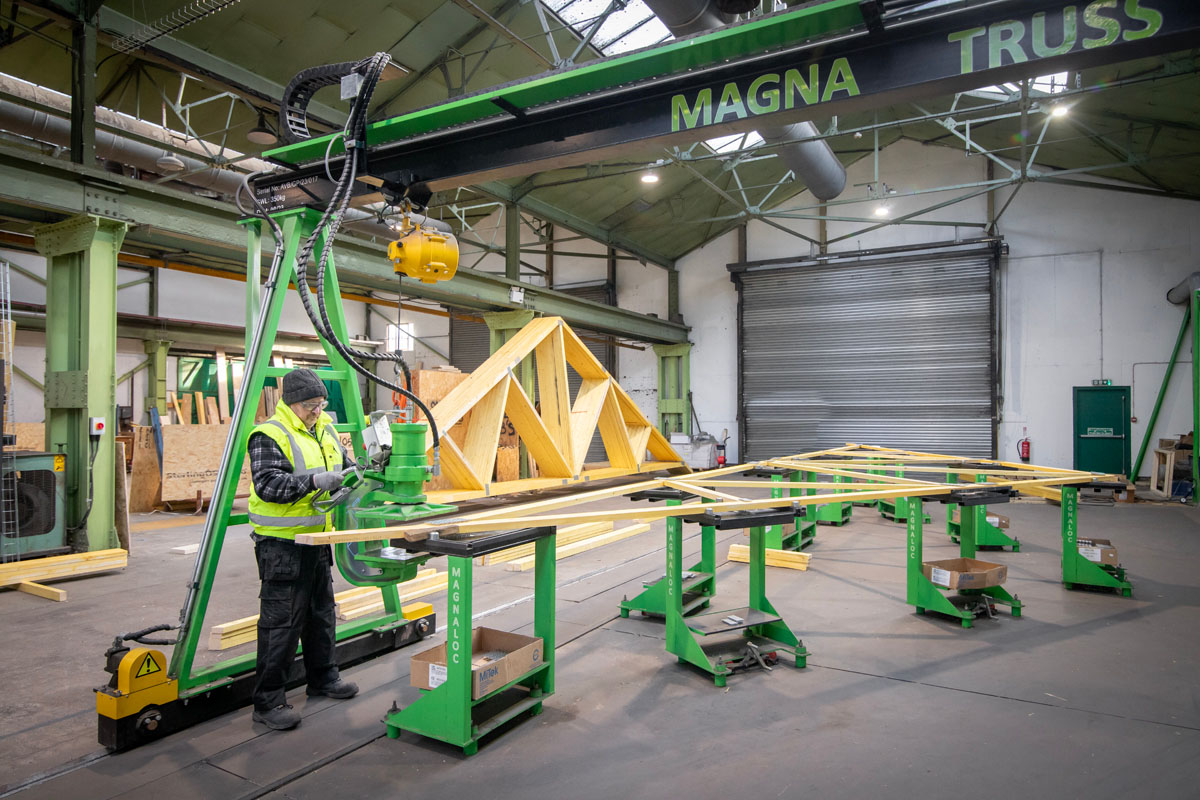
Timber frame construction has grown significantly in popularity due to its sustainability, speed of build, and versatility. Yet, despite its many advantages, myths and misconceptions about timber frame construction persist in the industry. We’re here to debunk some of the most common myths once and for all.
Myth 1: Timber Frame Homes Are Less Durable Than Brick and Block
Debunked: Timber frame buildings are incredibly durable and designed to meet the same structural integrity standards as brick-and-block construction. Engineered timber products are manufactured to precise standards and treated for strength and longevity. Many timber frame homes have stood the test of time for centuries, with modern innovations only improving their durability.
Timber frame construction is fully compliant with UK building regulations, ensuring long-lasting, robust structures suitable for residential, commercial, and mixed-use developments.
Myth 2: Timber Frame Is Not Fire-Resistant
Debunked: Timber is often perceived as a fire risk, but modern timber frame systems are highly fire-resistant when built to current standards. The structural components are designed and treated to meet stringent fire safety regulations, often outperforming other materials.
The natural charring process of timber creates a protective barrier that can slow the spread of fire. Additionally, fire-resistant plasterboard and insulation are integrated into the construction, ensuring compliance with UK fire safety regulations.
Myth 3: Timber Frame Construction Is Only Suitable for Residential Projects
Debunked: While timber frame is widely used in residential projects, its benefits extend far beyond. Timber frame is increasingly popular in commercial, educational, and healthcare developments due to its speed of construction, sustainability, and energy efficiency.
At Deeside Timberframe, we’ve supplied solutions for diverse projects, including mixed-use developments, care homes, and social housing projects, proving that timber frame is a versatile choice for various building types.
Myth 4: Timber Frame Homes Are Not Energy Efficient
Debunked: Timber frame construction is actually one of the most energy-efficient building methods available. Timber itself offers excellent thermal insulation properties, and the prefabricated nature of the panels allows for a precision fit, reducing thermal bridging and improving airtightness.
Many timber frame projects, including those delivered by Deeside Timberframe, easily meet and exceed standards such as Part L compliance and Passivhaus standards for energy efficiency. This results in reduced heating costs and a smaller carbon footprint for homeowners and businesses.
Myth 5: Timber Frame Construction Is More Expensive
Debunked: Timber frame construction is often more cost-effective than traditional brick-and-block methods, especially when considering the entire project lifecycle. The speed of build reduces on-site labour costs and overheads, while offsite manufacturing minimises material waste and ensures higher precision.
Additionally, the faster project completion timeline allows for quicker returns on investment, making timber frame an attractive option for developers seeking both speed and efficiency.
Why Timber Frame Makes Sense
Timber frame construction has evolved to become one of the most reliable, sustainable, and cost-effective modern methods of construction (MMC) available today. From residential developments to large-scale commercial projects, it offers durability, energy efficiency, and speed while aligning with the UK’s sustainability goals.
At Deeside Timberframe, we are committed to delivering high-quality timber frame solutions that meet the highest industry standards. If you have any questions or would like to explore how timber frame can benefit your next project, get in touch with us today.
📧 Email us at: info@deesidetimberframe.com
📞 Call us on: 01569 767 123